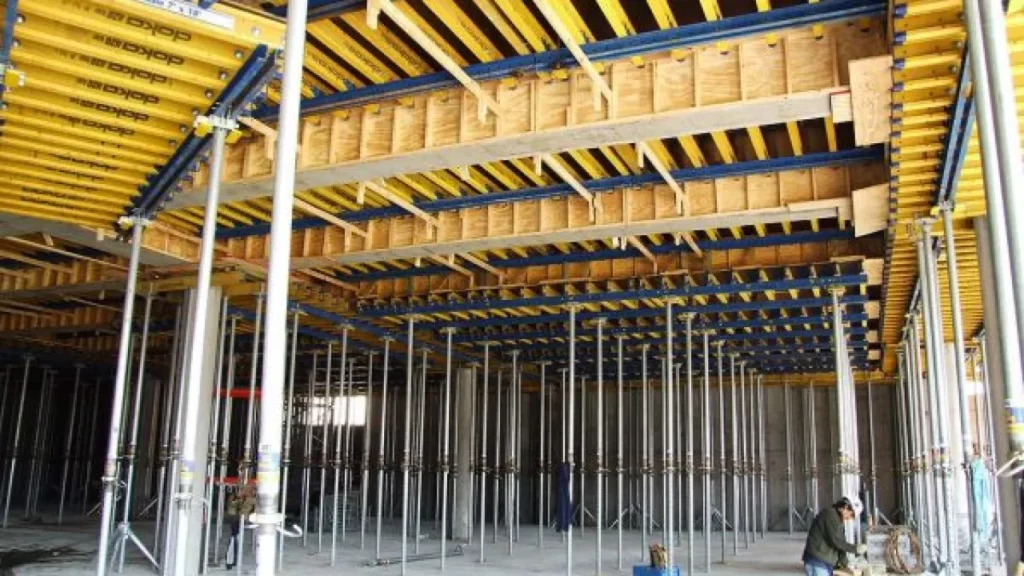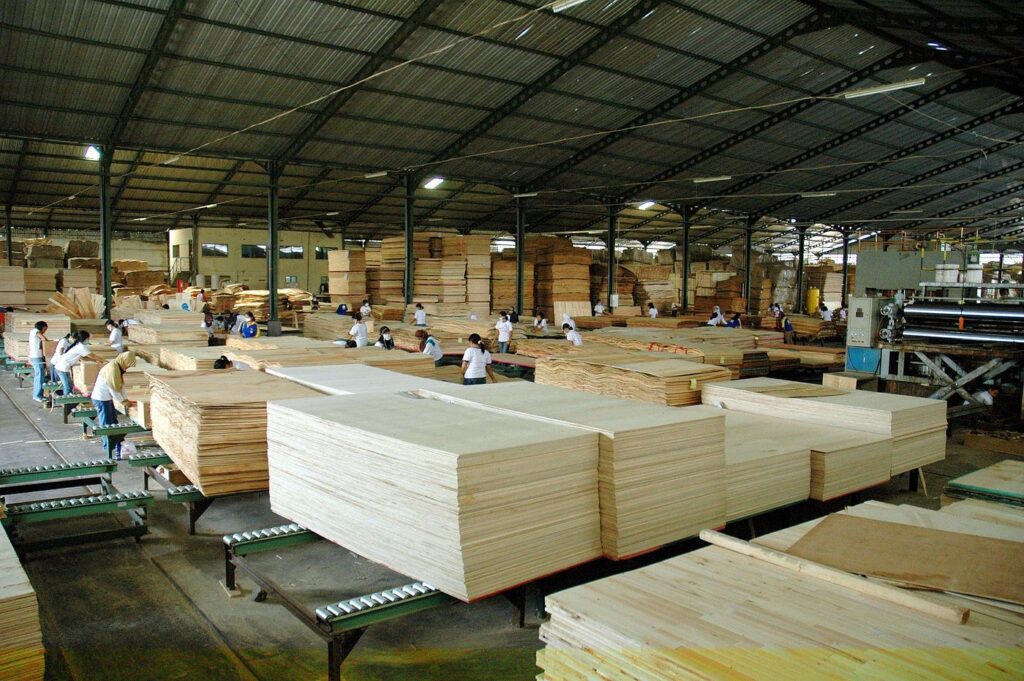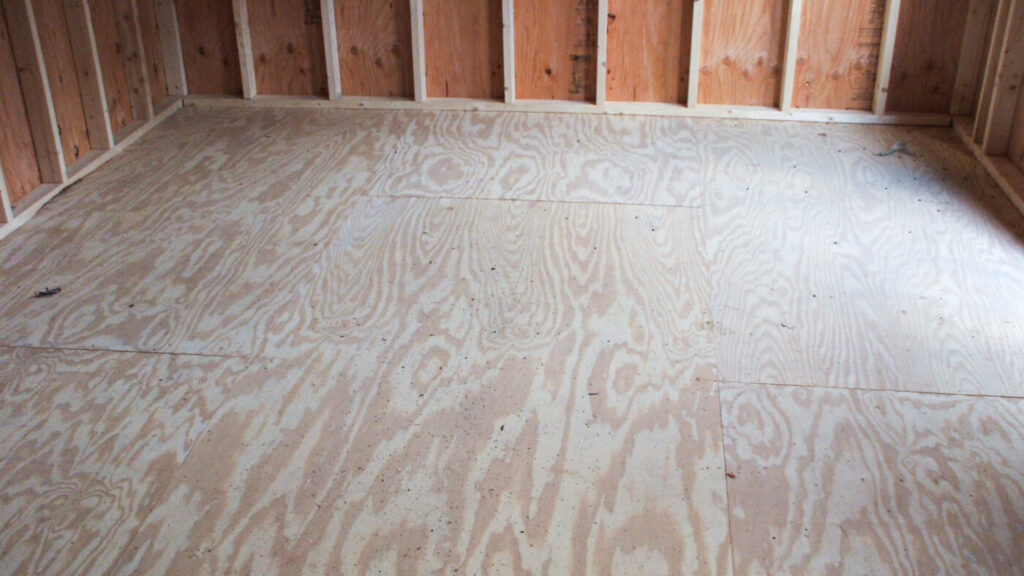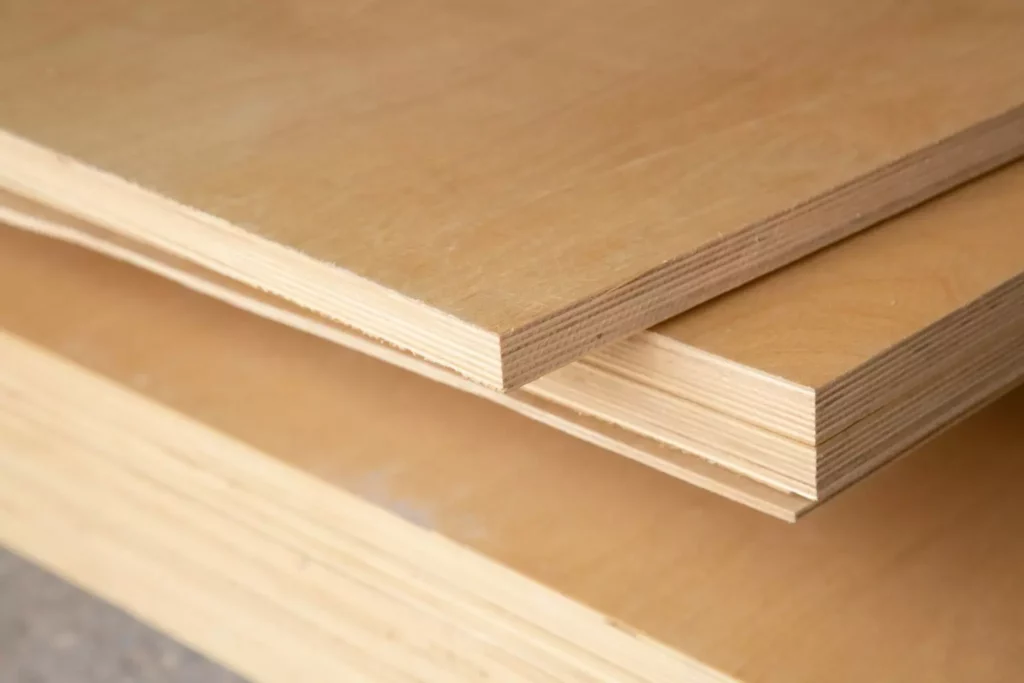Formwork plywood plays a crucial role in large-scale construction projects, providing support and structure during the concrete pouring process. Its durability, versatility, and cost-effectiveness make it a preferred choice for construction professionals around the world. In this article, we will explore the various aspects of formwork plywood and its significant contributions to the construction industry.
Understanding Formwork Plywood
Before delving into the specifics, it is essential to have a clear understanding of what formwork plywood is and its characteristics. Formwork plywood, also known as shuttering plywood, is an engineered wood product that is specifically designed for temporary structures, such as molds or forms, in construction projects. It is constructed by bonding several layers of thin veneers together, creating a strong and durable material that can withstand the immense pressure exerted by wet concrete.
Formwork plywood is typically made from high-quality hardwood or softwood veneers, which are bonded with a waterproof adhesive. This ensures that the plywood maintains its structural integrity and resists water absorption during the concrete pouring process. It is important for formwork plywood to have a smooth surface to facilitate easy release of the concrete once it has cured.
In addition to its water resistance, formwork plywood is also known for its strength. It has excellent load-bearing capacity and can withstand heavy loads without warping or bending. This strength is achieved through the cross-bonding of the veneers, which provides uniformity and stability to the material.
Now, let’s explore some fascinating details about the different types of formwork plywood available in the market:
Different Types of Formwork Plywood
Formwork plywood is available in various types, each catering to specific construction requirements. The most common types include:
- Structural Plywood: This type of formwork plywood is designed for high-strength applications, such as supporting the weight of multiple stories in high-rise buildings or large infrastructure projects. It is manufactured using a combination of hardwood and softwood veneers, ensuring maximum strength and durability. Structural plywood undergoes rigorous testing to meet industry standards and is known for its exceptional load-bearing capacity.
- Marine Plywood: Marine plywood is specifically manufactured to withstand constant exposure to water and moisture. It is ideal for formwork applications in areas with high humidity or near bodies of water. Marine plywood is made from selected hardwood veneers and is bonded with a special adhesive that provides superior water resistance. This type of formwork plywood is highly resistant to delamination and fungal attacks, making it suitable for long-term use in marine environments.
- Film-Faced Plywood: Film-faced plywood is coated with a smooth and durable film on both sides, providing a smooth surface finish to the concrete. This type of formwork plywood is widely used in projects that require a high-quality surface finish, such as architectural structures or decorative elements. The film coating not only enhances the appearance of the concrete but also protects the plywood from moisture and abrasion. Film-faced plywood is available in various colors and textures, allowing architects and designers to unleash their creativity.
By offering different types of formwork plywood, manufacturers ensure that construction professionals have access to materials that meet their specific needs. Whether it’s for heavy-duty applications, water resistance, or aesthetic requirements, formwork plywood provides a reliable and versatile solution for temporary structures in the construction industry.

The Importance of Formwork Plywood in Construction
The use of formwork plywood in construction offers numerous advantages, making it an essential component of large-scale projects. Let’s explore some of the key benefits:
Formwork plywood is not only crucial for providing structural support during the construction process but also plays a significant role in achieving architectural precision. The smooth surface of the plywood ensures that the concrete takes on a flawless finish, enhancing the overall aesthetic appeal of the structure. This attention to detail is particularly important in projects where design intricacy is a priority, such as modern architectural marvels or heritage restoration.
Learn about concrete plywood on: Top Reasons to Choose Concrete Plywood for Your Next Project
Structural Benefits of Formwork Plywood
Formwork plywood provides a robust and reliable support system for concrete, ensuring the structural integrity of the construction. Its high load-bearing capacity allows it to distribute the weight evenly, preventing any sagging or deformations. This ensures that the concrete cures uniformly, resulting in a solid and durable structure.
Furthermore, formwork plywood offers versatility in design, allowing construction teams to create complex shapes and forms with ease. This flexibility opens up a world of possibilities for architects and engineers, enabling them to push the boundaries of traditional construction methods and bring innovative concepts to life.
Cost and Time Efficiency of Using Formwork Plywood
Formwork plywood is a cost-effective solution for construction projects. Its reusability significantly reduces material costs, as the same plywood can be used multiple times. Additionally, formwork plywood is easy to handle and assemble, reducing labor costs and construction time. This efficiency makes it an attractive choice for large-scale projects with tight budgets and strict timelines.
Moreover, the environmental sustainability of formwork plywood cannot be overlooked. By opting for reusable materials like plywood, construction companies can minimize waste generation and reduce their carbon footprint. This eco-friendly approach aligns with the growing emphasis on sustainable practices in the construction industry, making formwork plywood a preferred choice for environmentally conscious projects. Read more about sustainability at https://www.mines.edu/sustainability/what-is-sustainability/
Formwork Plywood in Large-Scale Construction
Formwork plywood finds extensive use in large-scale construction, such as high-rise buildings and infrastructure development. Its versatility and adaptability make it suitable for a wide range of applications.
Formwork plywood is typically made from high-quality hardwood veneers that are bonded together to form a strong and durable sheet. These sheets are designed to withstand the pressure exerted by wet concrete during the construction process, ensuring that the formwork maintains its shape and integrity.
Application of Formwork Plywood in High-Rise Buildings
In the construction of towering skyscrapers, formwork plywood provides the necessary support during the pouring of concrete for each floor. Its strength and stability ensure that the formwork remains intact, allowing for the vertical construction to proceed smoothly and safely.
Additionally, formwork plywood can be easily cut and shaped to fit the unique requirements of each project, making it a versatile choice for complex architectural designs. Its smooth surface finish also results in concrete structures with clean edges and surfaces, enhancing the overall aesthetic appeal of the building.
Formwork Plywood in Infrastructure Development
Formwork plywood also plays a critical role in the construction of infrastructure projects, such as bridges, tunnels, and dams. The ability to mold the plywood into complex shapes and sizes allows for the creation of intricate structures. Its durability and resistance to harsh environmental conditions make it an ideal choice for such demanding applications.
Moreover, formwork plywood is known for its reusability, making it a cost-effective option for construction projects with repetitive concrete pouring requirements. This not only reduces project costs but also minimizes waste and environmental impact, aligning with sustainable construction practices.
Challenges and Solutions in Using Formwork Plywood
While formwork plywood offers numerous advantages, there are also challenges associated with its use. Understanding and overcoming these challenges is crucial to ensure the success of construction projects.
Formwork plywood is a versatile material commonly used in construction for creating temporary molds or forms into which concrete is poured. Its smooth surface and high strength make it ideal for achieving precise finishes in concrete structures. However, despite its benefits, there are certain challenges that construction professionals may encounter when working with formwork plywood.
Common Issues with Formwork Plywood
One common challenge with formwork plywood is the potential for warping or bending under extreme conditions. High temperatures or prolonged exposure to moisture can affect the structural integrity of the plywood. Additionally, improper handling and storage of the plywood can lead to damage, compromising its performance.
Another issue that may arise with formwork plywood is delamination, where the layers of the plywood separate due to moisture infiltration or rough handling. This can weaken the plywood and reduce its load-bearing capacity, posing a risk to the safety of the construction project. To find more about moisture click here.
Innovative Solutions for Formwork Plywood Challenges
Fortunately, advancements in technology and innovative solutions have been developed to address these challenges. Researchers and manufacturers are continuously improving the quality of formwork plywood by incorporating additives to enhance its durability and resistance to environmental factors. Additionally, proper handling, storage, and maintenance practices can minimize the risk of damage to the plywood, ensuring its longevity and optimal performance.
Some innovative solutions to combat warping in formwork plywood include the use of special coatings or treatments that provide a protective barrier against moisture and temperature fluctuations. These treatments can help stabilize the plywood and maintain its shape and strength, even in challenging environmental conditions. Furthermore, implementing quality control measures during the manufacturing process can help identify and eliminate any defects in the plywood before it is used in construction projects.

Future Trends in Formwork Plywood Use
As the construction industry evolves, so does the use of formwork plywood. Several trends are shaping the future of formwork plywood in large-scale construction:
Technological Advancements Impacting Formwork Plywood
The integration of digital technologies and automation in construction processes is revolutionizing the use of formwork plywood. Advanced software tools and robotic systems are being employed to optimize the design and fabrication of formwork plywood, improving efficiency and accuracy.
Moreover, the use of Building Information Modeling (BIM) software is becoming increasingly prevalent in the construction industry. BIM allows for the creation of detailed 3D models that enhance the planning and execution of formwork plywood installations. This technology enables project stakeholders to visualize the entire construction process, identify potential clashes, and streamline communication among team members.
Sustainability and Formwork Plywood
With an increasing focus on sustainability, there is a growing demand for environmentally friendly construction materials. Formwork plywood, being a renewable resource, aligns with this trend. Manufacturers are exploring innovative ways to produce formwork plywood using sustainable practices and materials, reducing its environmental impact.
In addition to sustainable sourcing, the concept of circular economy principles is gaining traction in the construction sector. This approach emphasizes the reuse and recycling of materials, including formwork plywood, to minimize waste and maximize resource efficiency. By incorporating circular economy practices, the construction industry can reduce its carbon footprint and contribute to a more sustainable built environment.
Conclusion
Formwork plywood holds a significant role in large-scale construction projects, providing essential support and structure during the concrete pouring process. Its versatility, durability, and cost-effectiveness make it a preferred choice for construction professionals worldwide. Understanding the characteristics, types, and benefits of formwork plywood is crucial in leveraging its potential and ensuring successful construction projects.


